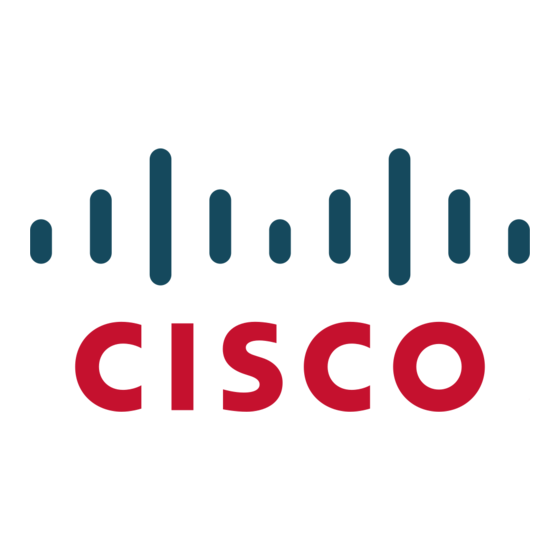Cisco 800 Series 릴리스 정보 - 페이지 20
{카테고리_이름} Cisco 800 Series에 대한 릴리스 정보을 온라인으로 검색하거나 PDF를 다운로드하세요. Cisco 800 Series 36 페이지. Fast step software design guide
Cisco 800 Series에 대해서도 마찬가지입니다: 빠른 시작 매뉴얼 (13 페이지), 빠른 시작 매뉴얼 (17 페이지), 구성 (32 페이지), 디자인 매뉴얼 (50 페이지)

Important Notes
Here, the command fair-queue 64 limits the number of conversations to 64, and the command
queue-limit 64 sets the discard threshold to 64. The command hold-queue 64 out limits the maximum
number of output packets to 64.
Failure to configure the above parameters may cause the router to display out-of-memory messages
when a large amount of mixed traffic is transmitted from ethernet to ATM.
Cisco 800 Series Router Clock—CSCdp09409
To run IPSec successfully, the Cisco 800 series router clock needs to be set accurately. Cisco 800 series
router clocks are set and maintained using Simple Network Time Protocol (SNTP). For best results, set
up a Network Time Protocol (NTP) server to periodically send time information messages to Cisco 800
series routers. See the SNTP configuration and command reference documentation for configuration
instructions. If you do not have an NTP server, you must reset the Cisco 800 series router clock using
the clock set command each time you restart the router.
The SNTP configuration documentation is available in the chapter "Monitoring the Router and
Network" volume of the Configuration Fundamentals Configuration Guide in the Cisco IOS
documentation set. The SNTP command reference documentation is available in the chapter "Router and
Network Monitoring Commands" in the "System Management Commands" volume of the
Configuration Fundamentals Command Reference manual of the Cisco IOS documentation set.
Cisco 800 Series Router Enhancements
Cisco 800 series routers support the following features. For more information about these features, see
the Cisco IOS documentation set.
•
•
•
•
•
•
Release Notes for the Cisco 800 Series Routers for Cisco IOS Release 12.1(5)YC
20
Hot Standby Routing Protocol (HSRP), which creates a Hot Standby router group with a lead router
that services all packets sent to the Hot Standby address. The lead router is monitored by other
routers in the group. If it fails, one of these standby routers inherits the lead position and the Hot
Standby group address.
Service Assurance Agent (SAA), which is both an enhancement to and a new name for the Response
Time Reporter (RTR) feature that was introduced in Cisco IOS release 11.2. This feature allows you
to monitor network performance by measuring key Service Level Agreement (SLA) metrics, such
as response time, network resources, availability, jitter, connect time, packet loss, and application
performance.
Triple Data Encryption Standard (3DES), based on the standard cryptographic algorithm developed
by the U.S. National Bureau of Standards.
X.28, X.29, and X.3 emulation for Packet Assembler/Disassembler (PAD), the standard user
interface between the data terminal equipment and PAD.
Frame Relay Inverse Address Resolution Protocol (ARP), which enables a station to request a
protocol address corresponding to a given hardware address.
Frame Relay support for a permanent virtual circuit (PVC) saves bandwidth associated with circuit
establishment and tear down in situations where certain virtual circuits must exist all the time.
78-12776-04
